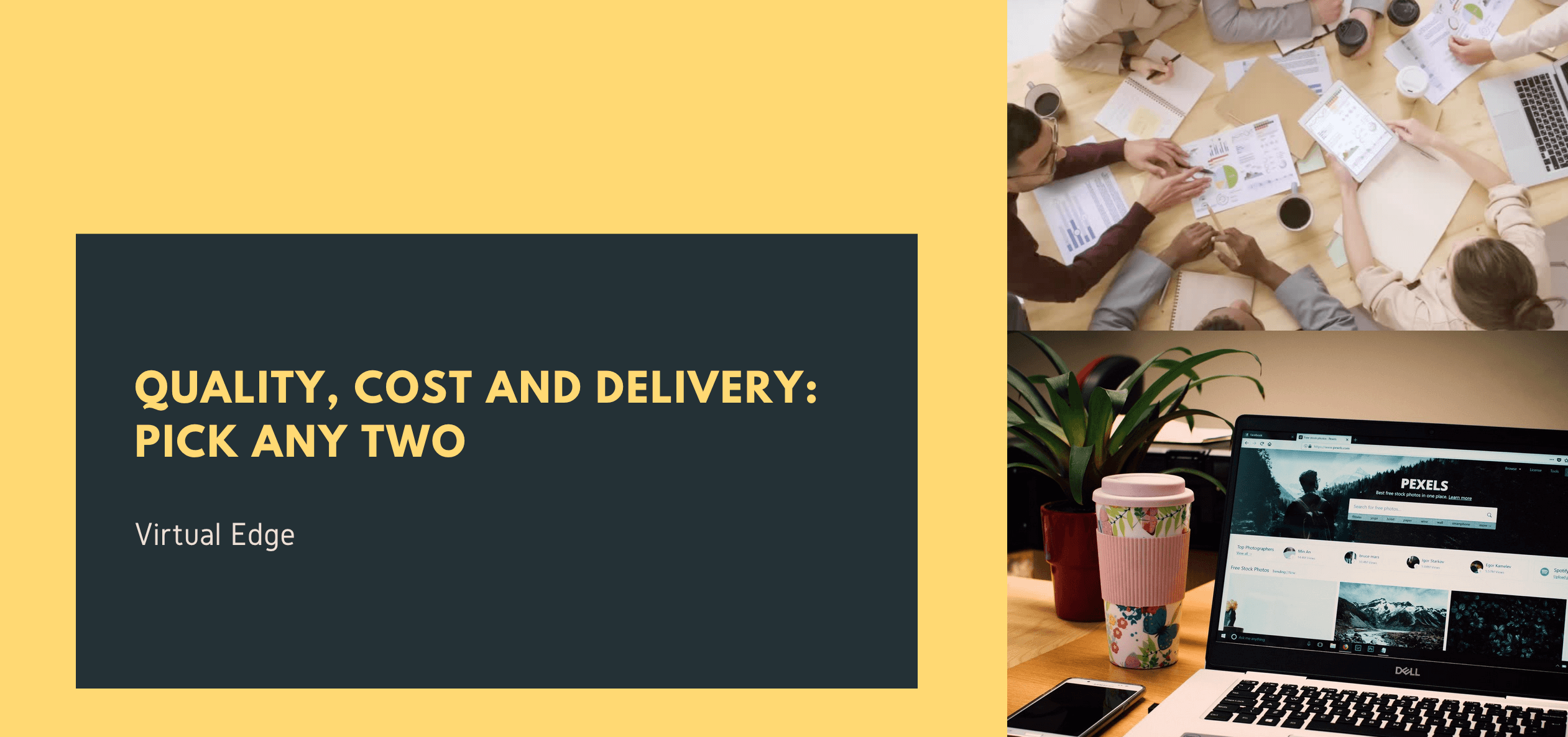QCD or Quality, Cost, Delivery is a term most frequently associated with manufacturing or supply chain management. It is used as the foundation for a series of analyses around KPIs (Key Performance Indicators).
There’s an old adage that states: “Quality, cost, delivery: pick any two.” This means there is a direct relationship between each of these, and businesses can only expect to have a positive outcome of two of the three at any given time. For example, higher quality and delivery speed will increase cost, or lower cost and increased delivery speed will reduce quality, etc.
Experiential marketing has evolved to include face-to-face, virtual, social and other digital marketing tactics as part of a 360 degree relationship between brands and their audiences. With that evolution, how are marketers managing the QCD triangle? In this post, I’ll examine the impact this evolution has made and share some ideas on improving and balancing quality, cost and delivery.
Quality
In a face-to-face environment, this is something we’ve strived for for decades. From speakers, to staff training, to signage and fit and finish of our booth or retail environment, many marketers may feel as if they’ve nailed this one. But what happens when you introduce quality of audience interaction? If you were to survey attendees of your experience, what would they say about the quality of conversation and relationship with your company and your brand? This becomes even more difficult with the advent of virtual events and social media. Platform developers are working feverishly to create the latest and greatest buzz-worthy tools to improve and enhance their virtual and social experiences. At the end of they day, however, it’s not about the platform or the tools, it’s about the engagement and interaction between brands and audiences. I’ve observed many brands who’ve done an adequate job of signposting around the social web, but few engage effectively.
How to improve this? Focus at least as much energy on listening as your brand does on speaking. Engage your audiences in conversations, regardless of tool or platform. Offer true value for your audiences with every engagement. To be relevant to your audiences, you must do relevant things. Also remember that frequency of interaction matters. Too much is just as damaging as too little, but in different ways.
Cost
The albatross of marketers. Everything is just so damn expensive. Marketers have applied procurement, process and penny-pinching to their programs with limited success. Taking a programatic approach via portfolio planning has helped many achieve balance. Virtual events and social media have certainly helped drive the cost of audience engagement down, but at what price? While digital experiences are indeed less expensive, the quality of engagement is far lower than a face-to-face experience. This is not to say virtual and social activities have no value, but should be applied as part of an overall plan to balance out the communications stream with your audiences. Bear in mind hidden costs are everywhere. For example, a virtual event will save on expenses like travel, shipping, drayage, etc, but building a quality experience online can be costly. Also, qualified audiences can be more difficult to attract to virtual events, which is another cost driver.
How to improve this? Understand what the marketing purpose is for each tactic in your portfolio. Apply the right activities for each stage of the pipeline. Monitor and diagnose performance of each and understand the performance relationship between each tactic and it’s contribution to the whole. Deselect or adjust activities which are under-performers and reinvest in those tactics which are driving success. Otherwise, continue to drive down costs using the traditional process, procurement and penny-pinching approach you’ve come to know and love.
Delivery
Through ‘just-in-time’ logisitics, global creative capabilities, streamlined fabrication and decentralized production processes, the speed at which a face-to-face event or experience can be delivered is mind-boggling. The same holds true for virtual experiences with digital sweatshops and pre-packaged “off-the-shelf” digital environments. Often these speedy solutions are of adequate quality, but who wants to be “adequate”? Cost however is a key issue when it comes to speedy delivery. Just because you can develop an experience quickly, doesn’t mean you should.
How to improve this? Sure, having quick-strike weapons in your arsenal which can be deployed as part of a flexible go-to-market strategy is a great idea, but tread carefully. Often marketers look to deploy something quickly when something else is failing. When planning your campaigns, make sure you focus on strategy first, and build a contingency plan for all major foreseeable circumstances, both positive and negative. What about a quick-strike plan that capitalizes on successful implementation, and not just when the world is crashing down around your very expensive campaign that is failing to draw an audience?
I would add just one more, Quantity. This is a holy grail of sorts for marketers. What is the right number, frequency, cadence and type of marketing activities required to meet a desired result? Too often marketers assume their audiences live their lives by a media plan. Now more than ever the way an audience experiences a brand is well out of control of the most well-intended marketer.
How to improve this? Test, test, and when you’re done, test again. Audiences are largely unpredictable. Draw a line in the sand and create a marketing mix that is strategically designed to meet your objectives and address your audiences where they live, work and play, both online and offline. Measure the results against your objectives and change it up, often, too see what works best.
